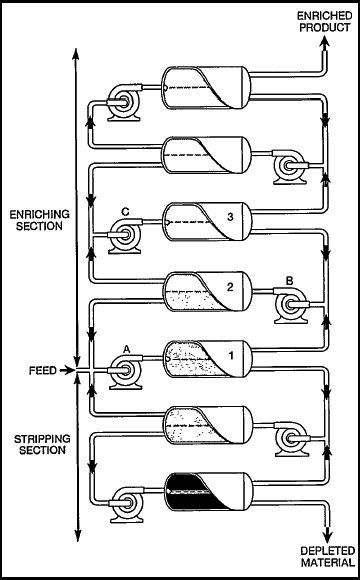The Manhattan Project: Making the Atomic Bomb
Part II: Early Government Support
Gaseous Diffusion
Gaseous diffusion appeared more promising. Based on the well-known principle that molecules of a lighter isotope would pass through a porous barrier more readily than molecules of a heavier one, this approach proposed to produce by myriad repetitions a gas increasingly rich in uranium-235 as the heavier uranium-238 was separated out in a system of cascades. Theoretically, this process could achieve high concentrations of uranium-235 but, like the electromagnetic method, would be extremely costly. British researchers led the way on gaseous diffusion, with John R. Dunning and his colleagues at Columbia University joining the effort in late 1940.
